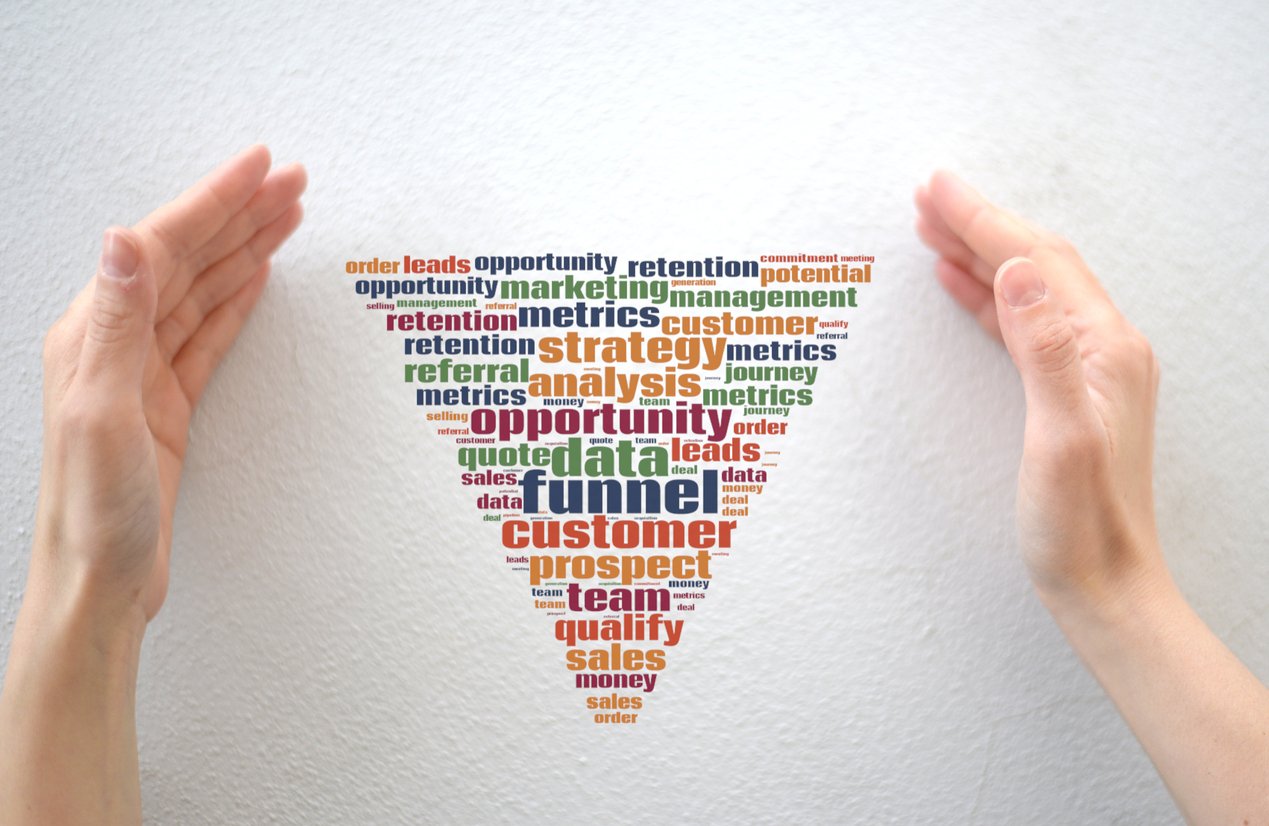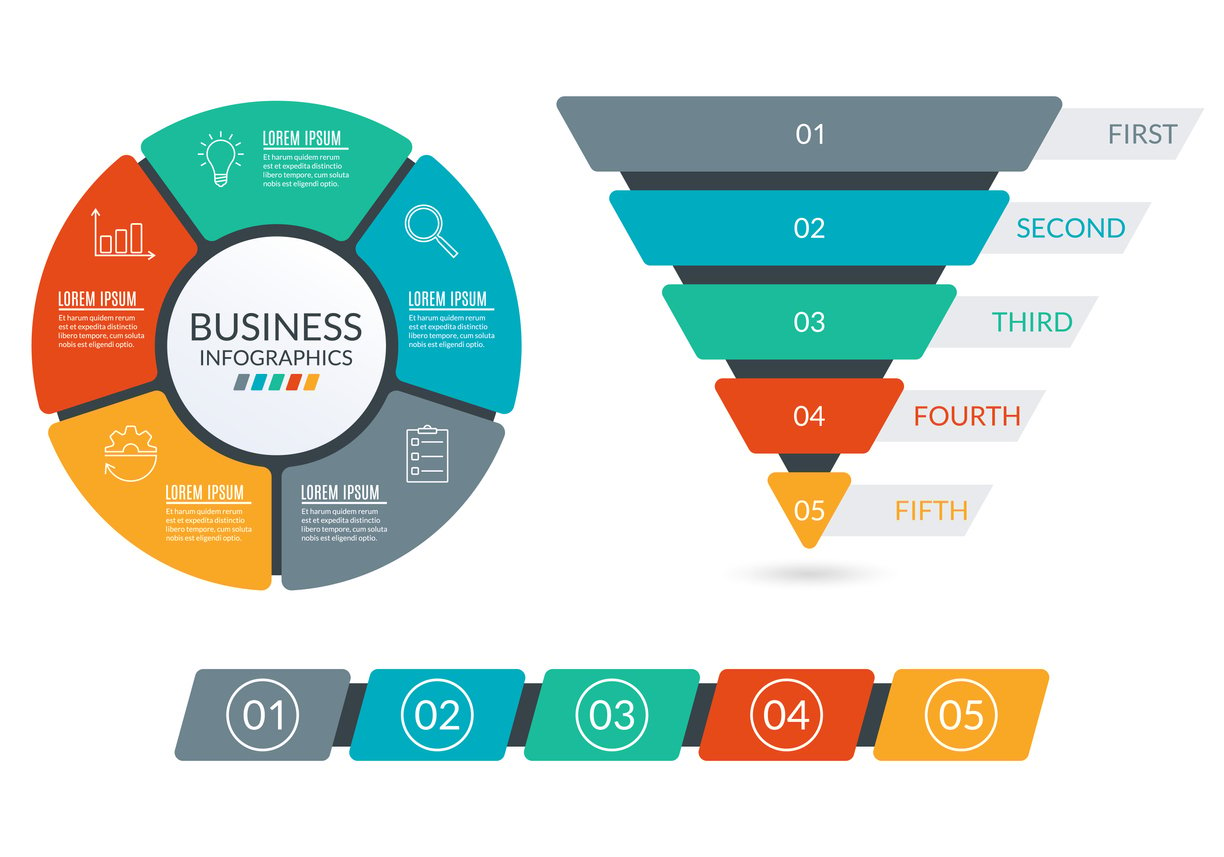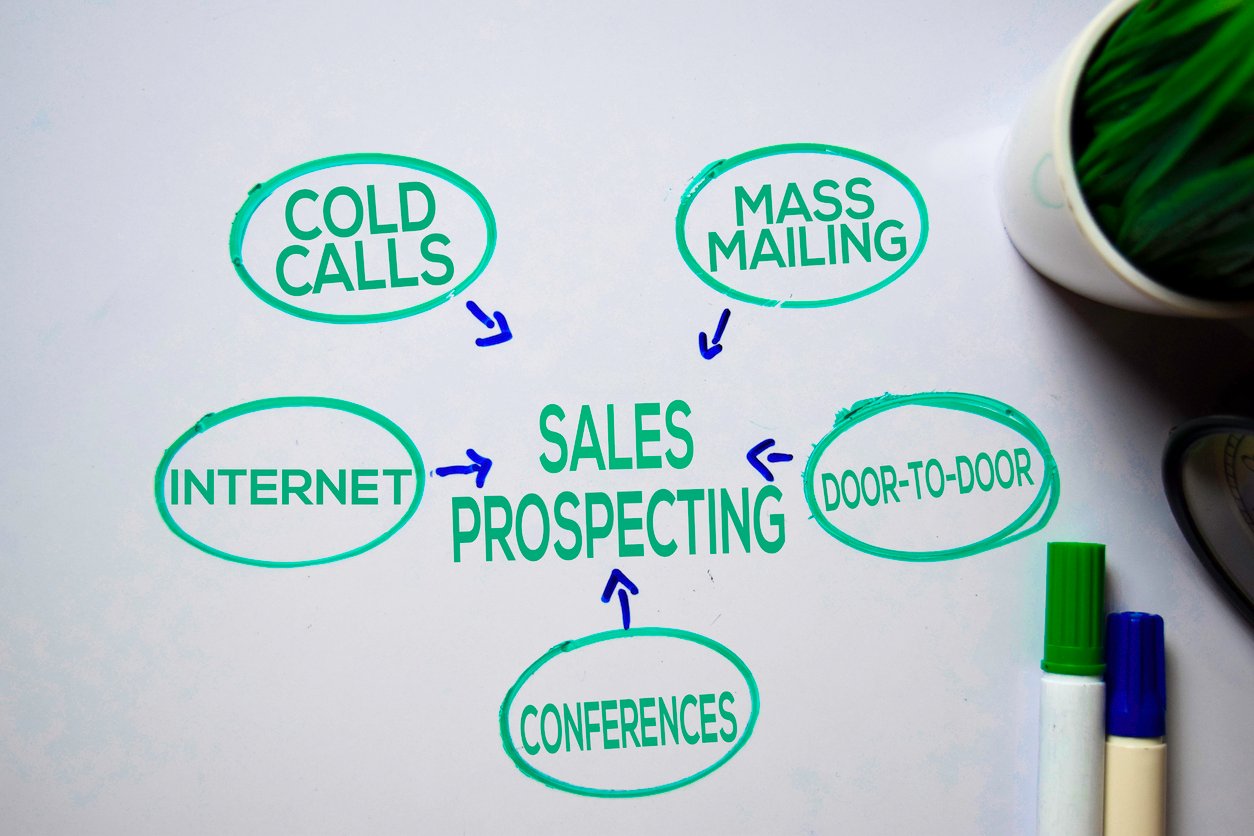
Sales Marketing Strategy [Importance, Challenges, Top Tactics]
 Updated on
Updated on
 By Carlos Correa
By Carlos Correa
Carlos Correa
Carlos has been involved in the sales space for well over ten years. He began in the insurance space as an individual sales agent, managing teams as s...
learn more
Carlos Correa
Carlos has been involved in the sales space for well over ten years. He began in the insurance space as an individual sales agent, managing teams as s...
Table of Contents
Table of Contents
For virtually every business around, growing revenue is the primary goal.
But this doesn't happen in a vacuum. To see real revenue growth, you need to reach new potential customers, capture leads, and nurture relationships to promote customer retention.
And the key to all of that?
Sales and marketing strategies.
You're probably just spinning your wheels without a well-developed sales and marketing strategy. Sure, you might get lucky every now and then and see a strong month, but right after that, you're back to wondering where all those leads are at.
In this article, we're going to outline what makes a powerful sales and marketing strategy and show you exactly how to build one for yourself.
Better tell your bank manager that $$$ is about to come rolling in.
Why a Sales and Marketing Strategy Matters
A disconnected team can burn through budgets fast. Sales is chasing leads that marketing barely qualified, and marketing is generating content sales doesn't use. Sound familiar? That's exactly why a strong marketing and sales strategy is essential.
An effective sales marketing strategy aligns messaging, goals, and customer touchpoints so both teams work toward one clear outcome: revenue growth. It bridges the infamous sales-marketing divide by setting shared KPIs, defining buyer personas together, and creating content that drives conversations, not confusion.
Here's how a cohesive sales and marketing strategy plan impacts your bottom line:
- Improves Conversions: When marketing attracts qualified leads and sales nurtures them using the same tone, positioning, and context, conversion rates naturally climb. Research states that companies with tightly aligned marketing and sales strategies saw a 38% higher win rate.
- Boosts Customer Experience: Today's buyer doesn't care which team they're talking to, just that the brand feels consistent. A joint marketing sales strategy ensures messaging is seamless across every touchpoint: from the first ad to the final follow-up.
- Maximizes ROI: Duplicated efforts and missed opportunities cost money. But a well-orchestrated strategy in sales and marketing ensures your CRM, content, and campaigns all pull in the same direction. That means less waste, and better return on every dollar spent.
So whether you're sketching out a new marketing plan and sales strategy or trying to plug gaps in an existing one, remember: the best sales marketing strategies are well-documented, and well-executed across teams.
Sales Strategy vs. Marketing Strategy
Before you can align your teams, you need to understand the unique roles sales and marketing strategy play.
Knowing these distinctions can help you craft a more effective sales and marketing strategy plan, one where each side does what it does best and supports the other.
But first, here's a side-by-side breakdown of how sales strategies and marketing strategies differ:
|
Aspect |
Marketing Strategy |
Sales Strategy |
|
Primary Goal |
Generate awareness, attract leads |
Convert leads into paying customers |
|
Main Focus |
Brand positioning, messaging, demand generation |
Relationship-building, deal negotiation, closing |
|
Success Metrics |
Website traffic, lead volume, engagement rates, MQLs |
Conversion rate, deal size, win/loss ratio, revenue closed |
|
Key Activities |
Content creation, SEO, paid ads, email campaigns, social media |
Prospecting, demos, follow-ups, handling objections, contract negotiation |
|
Timeline |
Long-term brand growth and pipeline nurturing |
Short-to-mid-term revenue realization and customer acquisition |
Together, these functions form the backbone of an effective marketing and sales strategy that turns browsers into buyers.
What's the Difference?
If you're still thinking "But aren't they basically the same thing?"—let's clear that up. Here's a quick list of what sets marketing and sales strategies apart:
- Marketing drives brand awareness and captures attention at the top of the funnel. Sales takes that interest and closes deals through direct interaction.
- Marketing often relies on automation and scalable outreach, but sales focuses on one-to-one engagement.
- Marketing success is about reach and influence, sales success is about revenue and retention.
- A marketing strategy builds the audience, while a sales strategy builds the customer base.
Despite their differences, they're like two gears in the same revenue machine, so one doesn't function well without the other.
How Do Sales and Marketing Strategies Work Together?
A high-performing sales marketing strategy blends the best of both worlds. When teams collaborate, share data, and move in sync, you get a smoother buyer journey, and better business results.
According to research, companies with strong alignment between sales and marketing are 67% more effective at closing deals.
Here's how to make it work:
- Set Shared KPIs: Focus on pipeline velocity, lead quality, and customer lifetime value, not just siloed metrics.
- Collaborate on Content: Sales can give real feedback on what collateral actually drives action.
- Sync Your CRM Systems: One platform, one customer view, one goal.
- Create Feedback Loops: Let marketing adjust campaigns based on sales feedback.
- Align Personas and Messaging: Consistency improves trust and engagement across every stage.
When sales and marketing strategies work hand in hand, your pipeline becomes full and productive. And your prospects? They feel like they're being guided, not shoved, down the funnel.
Common Challenges of Sales and Marketing Strategies

Even the best-laid sales marketing strategy can hit snags. Just because you've got a plan on paper doesn't mean it's foolproof in practice. When the execution falters, it's usually not because one team isn't doing their job, it's because they're not doing it together.
Below are some of the most common challenges businesses face when rolling out a sales marketing strategy, and what you can do to avoid falling into the same traps.
1. Misaligned Goals or Metrics
One team's chasing MQLs, the other's sweating over closed deals, and suddenly, both are frustrated. This misalignment of sales objectives creates finger-pointing rather than collaboration.
A truly effective sales and marketing strategy plan sets shared metrics like pipeline contribution, lead-to-close ratio, and revenue growth. In fact, research shows that companies with aligned teams grow revenue 19% faster than those operating in silos.
Pro tip: Tools like Ringy help align goals by giving both teams real-time access to lead data, communication history, and performance metrics, all from a single dashboard.
2. Poor Communication Between Teams
Marketing's latest campaign? Sales didn't even know about it. Sales' customer insights? They're stuck in someone's inbox. This kind of disconnect is all too common in sales and marketing strategies. When teams don't communicate regularly, it leads to duplicated efforts and lost opportunities.
Fix this by establishing weekly syncs, shared Slack channels, and using integrated platforms like Ringy to keep lead communication centralized and searchable for both sides.
3. Inconsistent Customer Messaging
Imagine clicking on a well-crafted ad promising a free trial, only to get a sales rep who pitches an entirely different offer. It's jarring, and a fast way to lose trust. This kind of inconsistency is a classic breakdown in marketing and sales strategy alignment.
Solving this means co-creating messaging frameworks and training both teams on shared value propositions, tone, and timing. When done right, your marketing sales strategy ensures that every touchpoint, including ad, email, call, or demo, feels cohesive and intentional.
4. Technology Silos (e.g., Separate CRMs or Platforms)
When marketing uses one platform and sales another, good luck getting a complete view of the customer. These tech silos cripple even the best strategies in sales and marketing by making data-sharing clunky, delayed, or impossible.
The solution? Consolidate your tech stack. A unified CRM like Ringy helps bridge the gap by offering VoIP, SMS, lead tracking, and task automation, all in one place. No more bouncing between tools or losing leads in the shuffle.
How to Build a Sales and Marketing Strategy Plan

A good strategy is a living, breathing system that evolves with your business. Creating an effective sales and marketing strategy plan means intentionally crafting a roadmap where every campaign, call, and conversion effort is connected.
If you're looking to build (or fix) your sales marketing strategy, this step-by-step breakdown is your blueprint.
1. Define Shared Goals and KPIs
First things first: alignment. The quickest way to tank a sales and marketing strategy is having both teams aim at different targets. Marketing wants more leads, sales wants better leads. Do you see the tension?
Instead, define shared KPIs that reflect the full funnel, like:
- Marketing Qualified Leads (MQLs) that convert
- Lead-to-customer conversion rate
- Sales cycle length
- Revenue influenced by marketing
By focusing on metrics both teams impact, you'll encourage collaboration instead of competition.
2. Map the Buyer Journey Together

Your customer doesn't care which department they're interacting with, they just want a smooth ride. That's why a strong sales marketing strategy maps the buyer journey from first touch to final handshake (or click).
Work together to understand:
- What triggers initial awareness?
- Where does the handoff from marketing to sales happen?
- What pain points and objections need to be addressed?
When both teams co-create this map, you can identify content gaps, messaging misfires, and automation opportunities. Bonus: it also helps refine lead scoring and follow-up timing.
3. Align Messaging and Value Propositions
Here's where many sales and marketing strategies go off the rails: marketing says one thing, sales says another. Confused prospects don't convert.
Create a shared messaging playbook that includes:
- Value propositions for each stage of the funnel
- Key differentiators
- Tone of voice and vocabulary
- Answers to common objections
Here's a consistent messaging framework for better alignment:
|
Buyer Stage |
Messaging Focus |
Sales Talking Point |
Marketing Collateral |
|
Awareness |
Problem identification |
"Here's what we see happening in your space" |
Blogs, social media, explainer videos |
|
Consideration |
Product positioning and solutions |
"Here's how we solve that issue" |
Case studies, whitepapers, comparison guides |
|
Decision |
Competitive edge and ROI |
"Why we're better and the safer bet" |
Testimonials, pricing sheets, demo offers |
Again, a tool like Ringy here allows both teams to access and apply this messaging consistently through shared notes, templates, and automated outreach.
4. Choose Integrated Tools and Platforms (e.g., CRM, Marketing Automation)
Tech stack matters. A beautiful sales marketing strategy can fall apart if it's supported by disconnected tools. You need platforms that talk to each other, and to your team.
Look for:
- CRMs that sync with marketing automation tools
- Shared contact databases
- Unified dashboards and analytics
- Communication tools like SMS or VoIP (Ringy does all of the above)
5. Review and Refine Regularly
Your sales marketing strategy isn't "set it and forget it." Review performance monthly or quarterly. Are leads converting? Are messages landing? Are both teams still aligned?
Use:
- Feedback from both teams
- CRM and campaign data
- Win/loss analysis
This constant fine-tuning turns your marketing and sales strategy into a competitive machine. And with tools like Ringy, tracking and adjusting on the fly becomes much easier—no bottlenecks, no blind spots.
Summary
Now that you understand more about sales marketing strategy, common challenges, and best practices, it's time to automate your processes.
Ringy's CRM solutions for remote sales are your one-stop shop: keep track of customers, create local IDs fast and easy, and all the sales tools your team needs to be successful.
Requesting a demo is easy, and our experts are waiting to hear from you!

Skyrocket your sales with the CRM that does it all.
Calling? Check. SMS? Check. Automation and AI? Check. Effortlessly keep in touch with your customers and boost your revenue without limits.

Take your sales to new heights with Ringy.
Sales in a slump? Ringy gives you the tools and flexibility you need to capture leads, engage with them, and turn them into customers.
Subscribe to Our Blog
Enter your email to get the latest updates sent straight to your inbox!
Categories
Related Articles



































































































